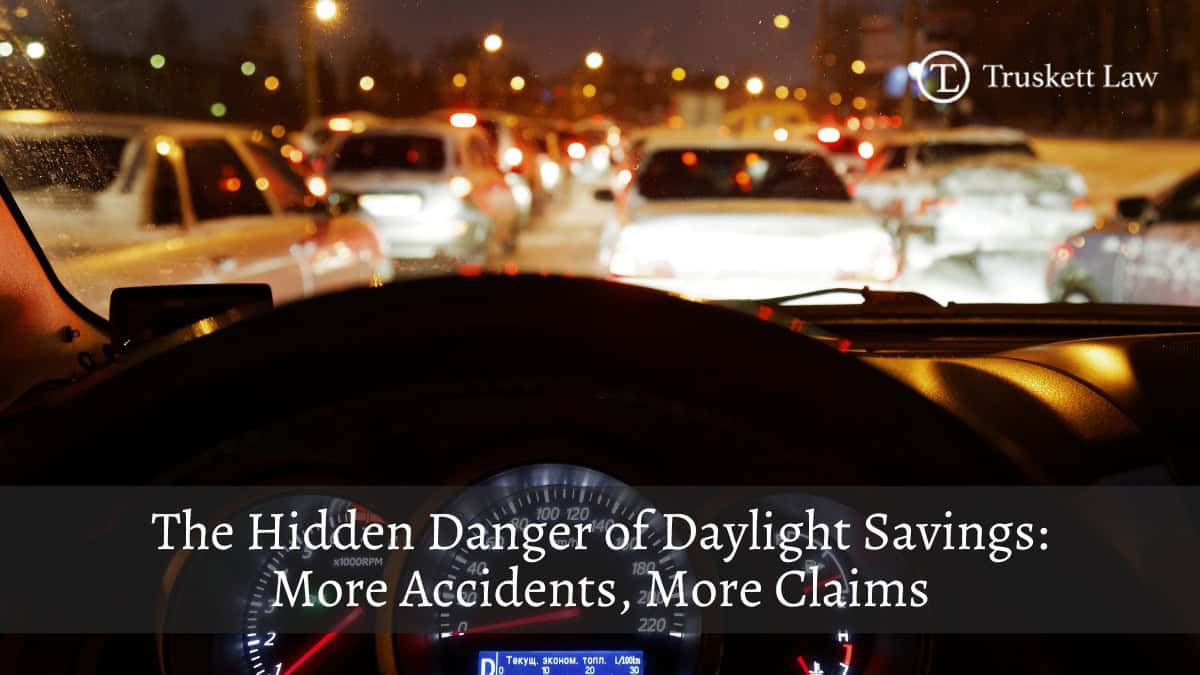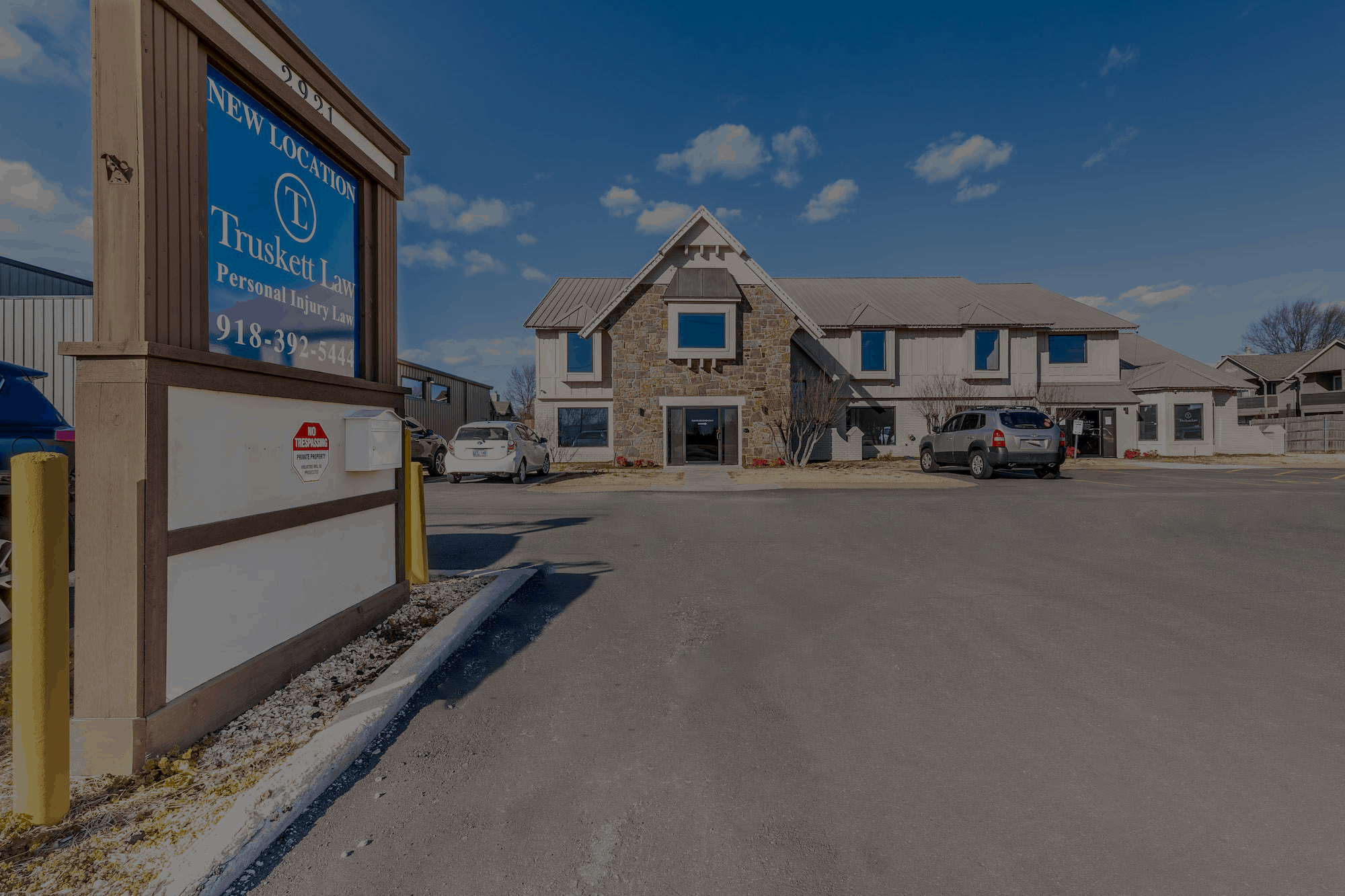
16 Oct The Hidden Danger of Daylight Savings: More Accidents, More Claims
When clocks spring forward or fall back each year, most people think only of adjusting their schedules or getting used to a slightly different sleep routine. But few realize that daylight savings time can have a measurable, and sometimes dangerous, impact on public safety.
Studies have shown that traffic accidents, workplace injuries, and even medical errors rise in the days following the time change. For drivers in particular, the shift in daylight can affect visibility, alertness, and reaction time – factors that contribute to a noticeable uptick in car accidents and insurance claims.
Understanding why this happens and how to protect yourself legally can make a significant difference when navigating the risks of daylight savings time.
Why Daylight Savings Time Affects Accident Rates
The first few days after a time change disrupt the body’s natural circadian rhythm, leaving many people fatigued, disoriented, or less alert. Even losing a single hour of sleep can reduce cognitive performance, slow reaction times, and increase the likelihood of mistakes on the road.
When millions of drivers are adjusting to the same time shift simultaneously, the collective risk of accidents spikes. Research by the University of Colorado found that fatal car crashes increase by as much as 6% in the week following the spring daylight savings transition.
Beyond sleep disruption, changing daylight patterns can also affect visibility during commutes. In the fall, earlier sunsets mean more drivers travel home in the dark, increasing the likelihood of pedestrian accidents and rear-end collisions.
In the spring, sunrise occurs later, leaving early-morning drivers navigating dim conditions. Both scenarios heighten the potential for misjudged distances, glare, and fatigue-related errors – all of which can lead to serious collisions.
Common Types of Accidents Linked to Daylight Savings Time
While any kind of motor vehicle crash can occur after daylight savings time, certain types tend to increase due to visibility and alertness challenges. Rear-end collisions are particularly common, as drowsy or distracted drivers fail to notice slowing traffic in time. Intersection accidents also rise, especially when drivers misjudge timing at lights or fail to yield during darker hours.
Pedestrian and cyclist accidents often see an increase as well. With daylight hours shifting, people walking or biking during what they assume are “safe” daylight periods may actually find themselves in reduced visibility conditions. Drivers adjusting to the new lighting are slower to adapt, creating a dangerous overlap of poor visibility and inattentiveness.
In rural areas, wildlife-related accidents can also surge. The fall time change often coincides with deer mating season, when animals are more active near roadways at dusk. Combined with drivers struggling to adapt to earlier nightfall, the result can be a noticeable rise in vehicle-animal collisions.

The Role of Fatigue in Daylight Savings Accidents
One of the most significant contributors to accidents after daylight savings is fatigue. The human body thrives on routine, and even minor changes in sleep schedules can trigger grogginess and reduced concentration.
Studies from the National Highway Traffic Safety Administration (NHTSA) show that drowsy driving can be as dangerous as drunk driving, impairing judgment and reaction time to a similar degree.
Drivers who lose just one hour of sleep are up to 30% more likely to be involved in a crash. This danger is amplified by the fact that many people underestimate the impact of fatigue. They may feel “a little tired” but still choose to drive, unaware that their alertness and coordination are significantly compromised.
For shift workers, parents of young children, and those with existing sleep issues, the time change can exacerbate an already fragile sleep cycle, further increasing accident risk.
Legal Implications of Daylight Savings Accidents
When an accident occurs around the time of a daylight savings shift, it may not seem immediately relevant to the legal process. However, the underlying causes – like fatigue, reduced visibility, or driver negligence – play a key role in determining liability.
Drivers have a legal duty to operate their vehicles safely, regardless of time changes or environmental factors. That means being overly tired or failing to adjust to new lighting conditions does not excuse negligent behavior.
If another driver causes an accident because they were fatigued, distracted, or failed to use proper headlights in dim light, you may be entitled to compensation for damages. This can include medical expenses, lost income, vehicle repairs, and pain and suffering.
Insurance companies often try to minimize payouts by blaming weather or environmental changes, but a skilled personal injury lawyer can help demonstrate that negligence—not daylight savings itself—was the true cause.
Steps to Take After a Daylight Savings Accident
If you’re involved in an accident shortly after a time change, your response can greatly impact your legal and financial outcome. First, ensure everyone’s safety and call emergency services if needed. Even if injuries seem minor, seek medical attention immediately – some symptoms from whiplash, concussions, or soft tissue injuries may take hours or days to appear.
Document the scene thoroughly by taking photographs of vehicle damage, skid marks, road conditions, and lighting. Collect contact and insurance information from all parties involved and obtain statements from any witnesses. If the lighting or visibility was poor, note that detail in your report, as it can help your attorney build a stronger case.
Finally, contact a personal injury lawyer before speaking with the insurance company. Adjusters may try to use your statements against you or offer a quick settlement that doesn’t cover the full extent of your losses. A lawyer can help you navigate communications, gather evidence, and negotiate fair compensation.
How Insurance Claims Can Get Complicated
Accidents during daylight savings transitions often involve disputes about fault. One driver may claim poor lighting or fatigue was unavoidable, while the other insists it was negligence.
Insurance companies can use these ambiguities to delay or deny claims, citing “environmental conditions” or “unavoidable hazards.” Having clear documentation and legal representation can make the difference between a denied claim and a fair settlement.
Medical claims can also become complicated if symptoms develop over time. For instance, a driver who initially felt fine after a crash may later experience back pain or headaches linked to the accident. Promptly reporting all symptoms and following up with medical providers ensures these injuries are documented for your claim.
If your accident involved a pedestrian or cyclist, liability may depend on lighting, crosswalk use, and driver visibility. A lawyer can help analyze the details of the case – such as whether headlights were used properly or if the pedestrian was visible – to establish a strong argument for compensation.

Preventing Daylight Savings Accidents
While we can’t avoid the time change, there are proactive steps to reduce risk during daylight savings transitions. Prioritize sleep in the days before the change by going to bed slightly earlier each night. On the first few mornings after the switch, give yourself extra time for your commute and stay vigilant on the road.
Check that your headlights, taillights, and windshield wipers are in good condition. Clean your windshield and mirrors to reduce glare during darker commutes.
When possible, avoid distractions like texting, eating, or adjusting the GPS while driving. Defensive driving – staying alert, maintaining safe following distances, and anticipating sudden stops – can help prevent collisions when others are not as alert.
Parents should also remind teen drivers about the risks of fatigue and changing light conditions. Young drivers are particularly vulnerable to accidents caused by inexperience and distraction, making daylight savings periods an important time for extra caution.
The Broader Impact of Daylight Savings
Daylight savings doesn’t just affect drivers; it has broader implications for workplace and public safety. The shift has been linked to an increase in workplace injuries, particularly in fields that require physical labor or operate heavy machinery. Hospitals also report slight upticks in medical errors during this time, attributed to fatigue and disrupted concentration.
For those recovering from injuries or managing ongoing health conditions, the time change can exacerbate symptoms like insomnia, anxiety, or cognitive fatigue. Taking care of your mental and physical health during transitions can help reduce risk both behind the wheel and at work.
Protecting Yourself After an Accident
If you’ve been injured in an accident during the daylight savings transition, you don’t have to handle the aftermath alone. At Truskett Law, our experienced personal injury attorneys understand the complexities that come with fatigue-related and visibility-related collisions. We help clients collect evidence, handle insurance negotiations, and pursue the compensation they deserve.
Don’t let a time change derail your recovery or your finances. Contact Truskett Law for a free consultation to discuss your case, understand your rights, and take confident steps toward justice. With the right legal team by your side, you can focus on healing while we focus on holding negligent parties accountable.


Sorry, the comment form is closed at this time.